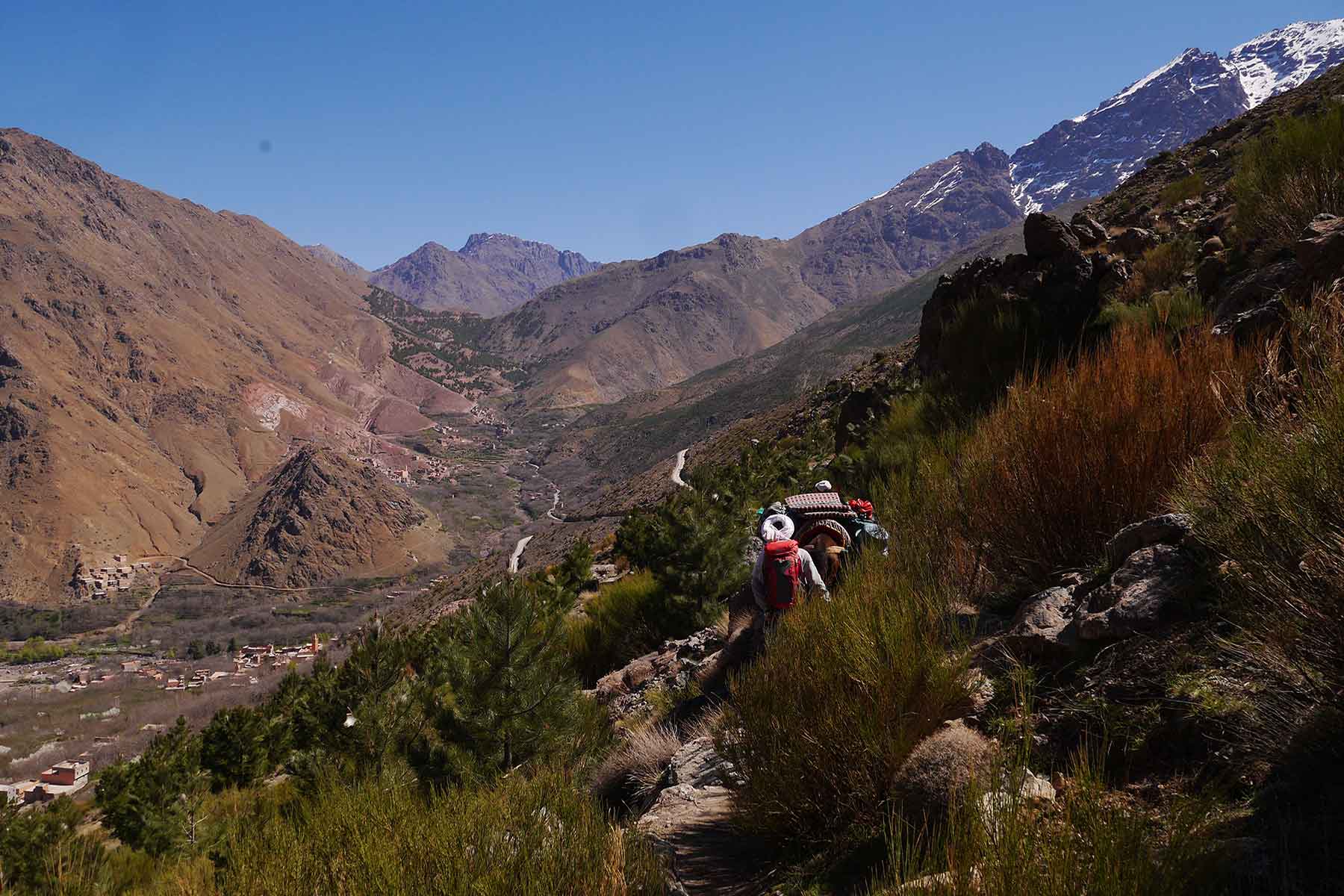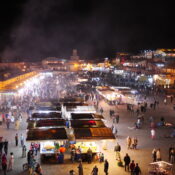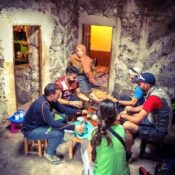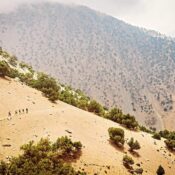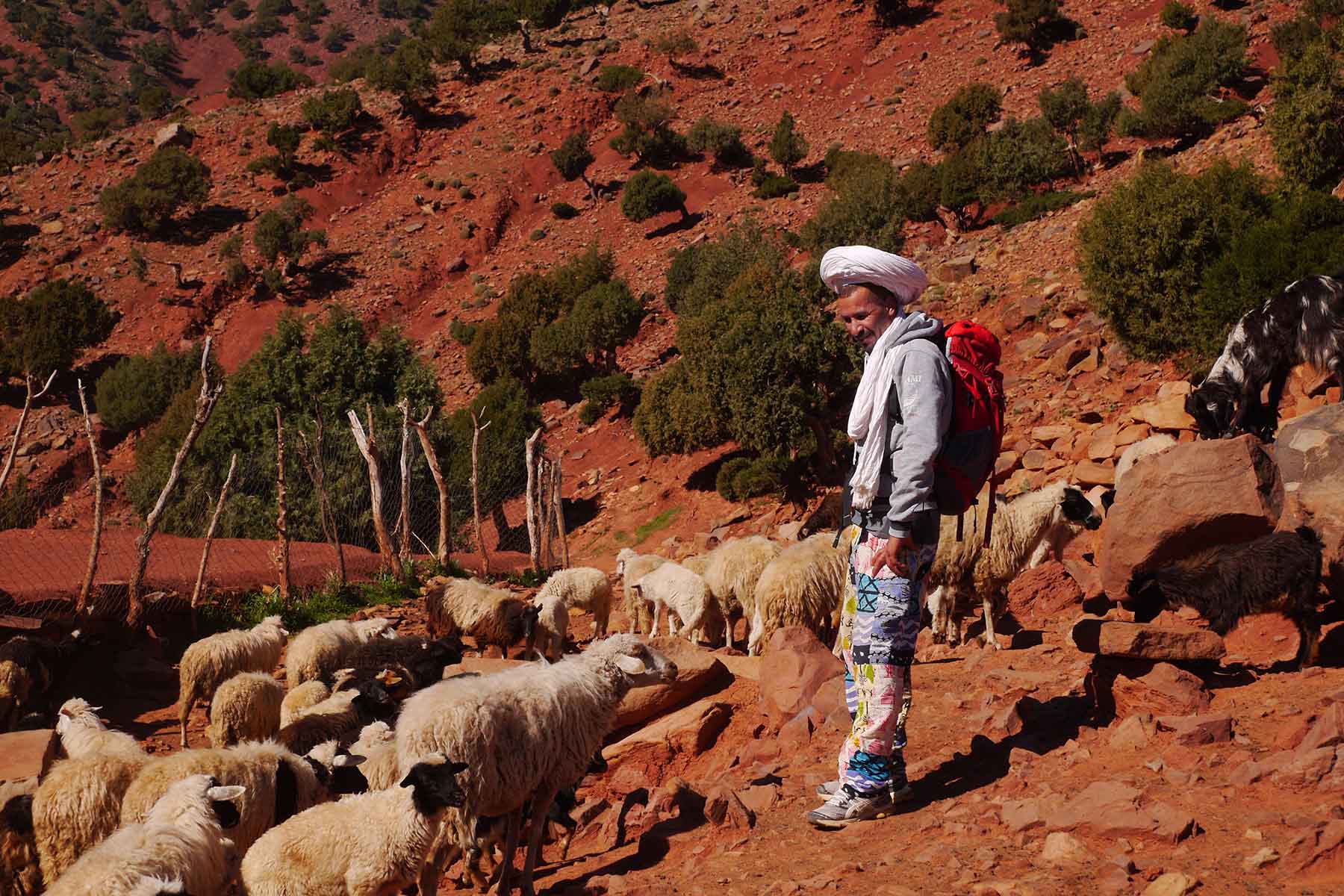
The Best Time to Go Trekking in Morocco:
The Best Time to Go trekking In Morocco
From the massive dunes of the Sahara Desert to the majestic peaks of the Atlas Mountains, Morocco is a country of remarkable contrasts. It offers a varied landscape that promises excitement at every turn for those who enjoy trekking. To guarantee a pleasant and joyful experience, it is essential to pick the ideal moment to start your trekking adventure. This information will assist you in choosing the ideal time to trek in Morocco
Atlas Mountains
1. trekking in morocco
March through May is spring. Why it’s ideal for hiking: In Morocco, spring is generally considered to be one of the greatest seasons for trekking. The weather is pleasant during this time of year, and the scenery is in full bloom, illuminating the valleys and mountains with brilliant hues. While the desert temperatures are still tolerable for those wishing to experience the Sahara, the snow in the Atlas Mountains starts to melt, opening up the paths. Temperature: In the highlands, daytime highs are between 15°C and 25°Chttps://www.mountain-forecast.com/peaks/Toubkal/forecasts/4167, whereas in the desert, they can reach as high as 30°C. Important areas include the Sahara Desert, the Rif Mountains, and the Atlas Mountains (Toubkal, M’Goun). Highlights: Longer hikes, like climbing Mount Toubkal or seeing the Anti-Atlas regions, are ideal during this time.
2. The autumn season (September through November) Why it’s ideal for trekking: Similar to spring, fall provides hikers with yet another window of opportunity. Exploring Morocco’s untamed landscapes becomes considerably more comfortable once the scorching summer heat starts to subside. Clear skies and comfortable temperatures make the autumn months ideal for both desert and mountain excursions. Temperature: In the highlands, daytime highs vary from 18°C to 28°C, while in the desert, they remain between 25°C and 35°C. Important areas include the Sahara Desert, the High Atlas, the Middle Atlas, and the Aït Bougmez Valley. Highlights: With bright skies and milder temperatures, autumn hikes provide breathtaking vistas of the Atlas Mountains and are perfect for climbing Toubkal or touring the isolated Berber communities. This time of year is fantastic since the desert is also lot more forgiving.Tips for trekkers: Hydration is key, especially for desert treks, as the heat can still be strong in early autumn. Start your treks early in the morning to avoid the hottest part of the day.3
Summer (June to August) Why it’s difficult: Trekking in Morocco can be difficult during the summer, particularly in desert regions and lower elevations where temperatures can reach over 40°C. Nevertheless, for the more daring, it’s the ideal time to visit the higher reaches of the Atlas Mountains, where the cool alpine air provides relief from the heat. Temperature: Expect highs of 30°C to 40°C in the desert, but even in the Atlas Mountains, nighttime lows of 10°C can occur.Key regions: Atlas Mountains (Toubkal, M’Goun), Rif Mountains, Sahara Desert. Highlights: This is a perfect time for longer treks, such as the ascent of Mount Toubkal or exploring the valleys of the Anti-Atlas. The almond trees bloom in February and March, creating picturesque scenes in the valleys. Tips for trekkers: Pack layers for the variable weather, as mornings and evenings can be chilly in the mountains, but the midday sun can be quite warm.Tips for trekkers: Stick to high-altitude treks and avoid the desert unless you can handle extreme heat. Ensure you’re properly equipped for intense sun exposure and carry plenty of water.
4. Winter (December to February) Why it’s special: Winter brings a different kind of trekking experience to Morocco. The Atlas Mountains transform into a snowy wonderland, attracting not only trekkers but also skiers and snowboarders. The Sahara Desert, though cold at night, becomes more accessible during the day as temperatures drop. Temperature: In the mountains, temperatures can range from 5°C to 15°C during the day, but drop below freezing at night. The desert stays between 15°C to 20°C during the day but can get as cold as 0°C at night.Key regions: High Atlas (winter treks to Mount Toubkal), Sahara Desert (Erg Chebbi, Erg Chigaga) https://maratrek.com/ba_location/sahara-desert-trips/. Highlights: Winter is a great time for experienced trekkers to challenge themselves with snow treks in the High Atlas. The snow-covered peaks create a stunning backdrop, and for those seeking solitude, the trails are far less crowded. The desert is also a magical experience in winter, with crisp, clear skies and the ability to trek without the oppressive heat.
Tips for trekkers: If you’re planning a winter trek in the mountains, be prepared for cold weather and potentially icy conditions. Hiring a guide is highly recommended, especially for snow-covered routes.
Conclusion: The Best Time for You The ideal time for trekking in Morocco depends on your preferences and tolerance for different weather conditions. For most trekkers, spring and autumn offer the best balance of pleasant temperatures and stunning landscapes, making them the most popular seasons. If you’re an experienced adventurer seeking a challenge, winter and summer offer unique experiences but require more preparation and resilience. Whenever you decide to visit, Morocco’s diverse terrain will ensure a memorable trekking experience that’s as rewarding as it is beautiful. Whether you’re scaling the peaks of the Atlas Mountains, wandering through ancient Berber villages, or crossing the golden sands of the Sahara, trekking in Morocco is a journey of discovery and awe.
#TrekkingMorocco
#AtlasMountains
#SaharaDesert
#MoroccoAdventure
#HikingInMorocco
#ExploreMorocco
#ToubkalTrek
#MoroccoTravel
#MoroccoNature
#MoroccoInSpring
#MoroccoInAutumn
#MoroccoTrekkingGuide
#AdventureTravel
#BerberVillages
#MoroccoOutdoors
All Categories
Recent Posts


